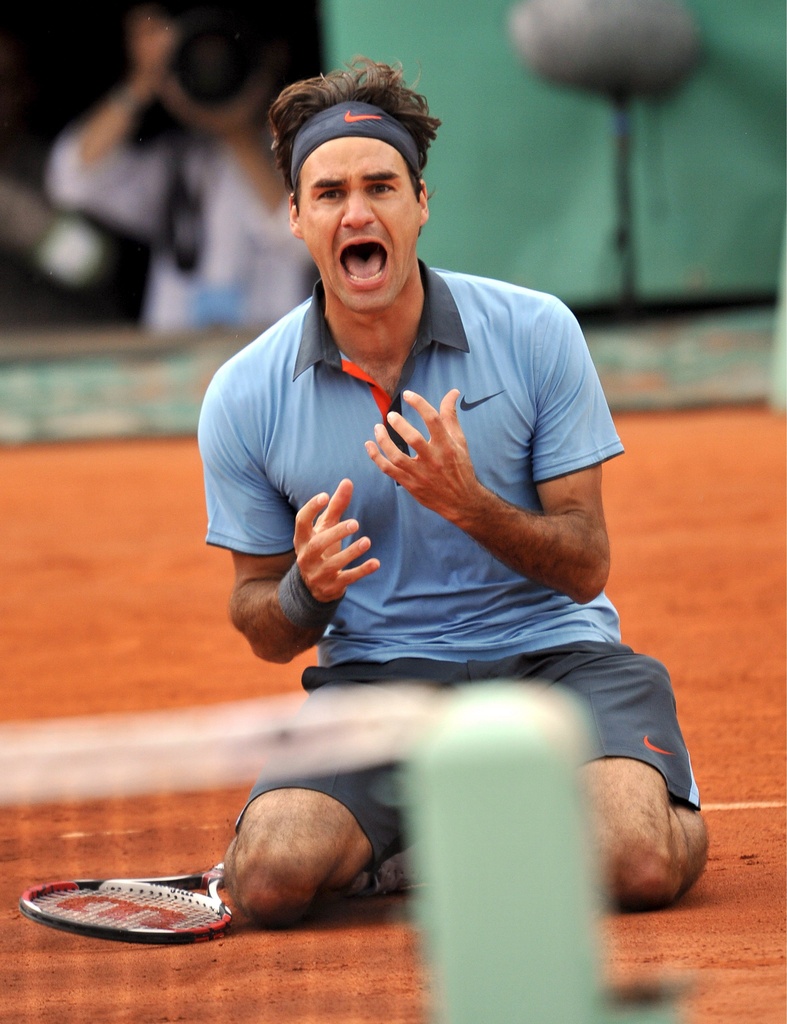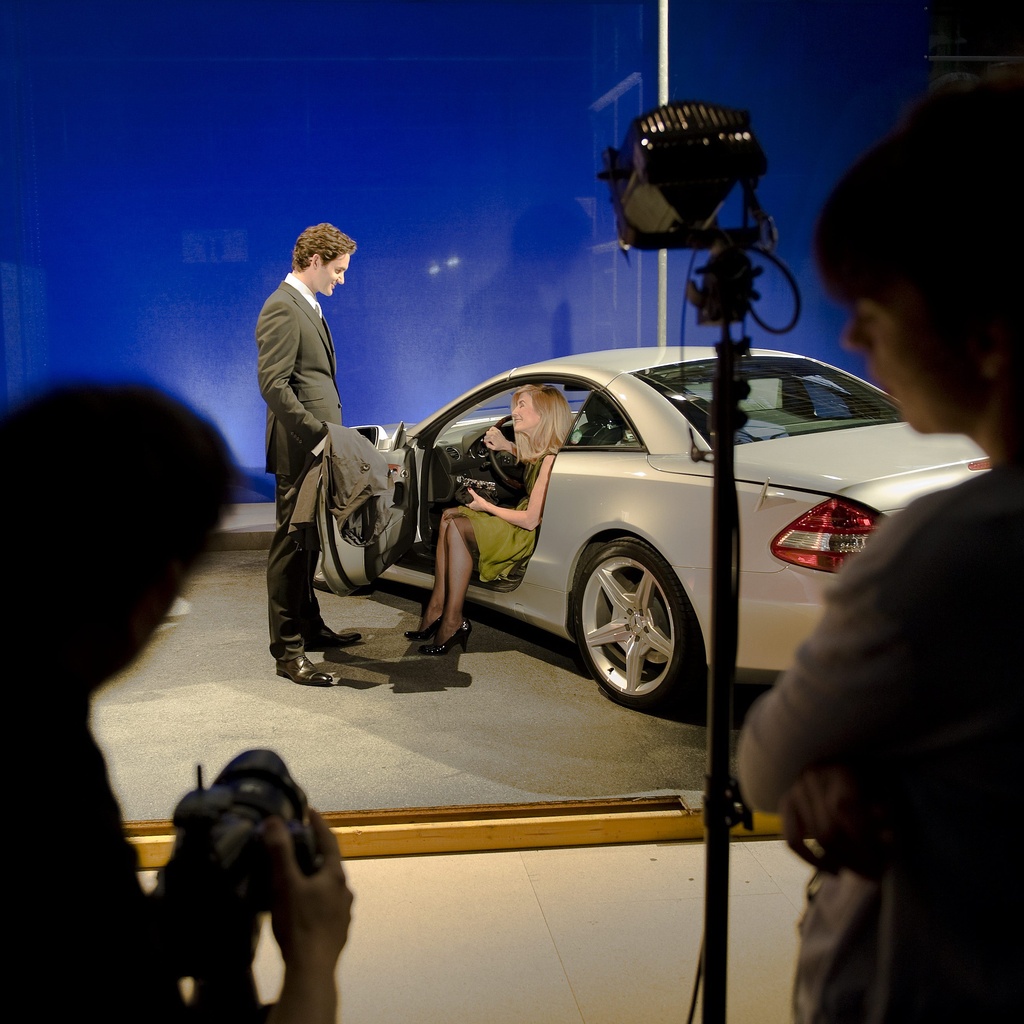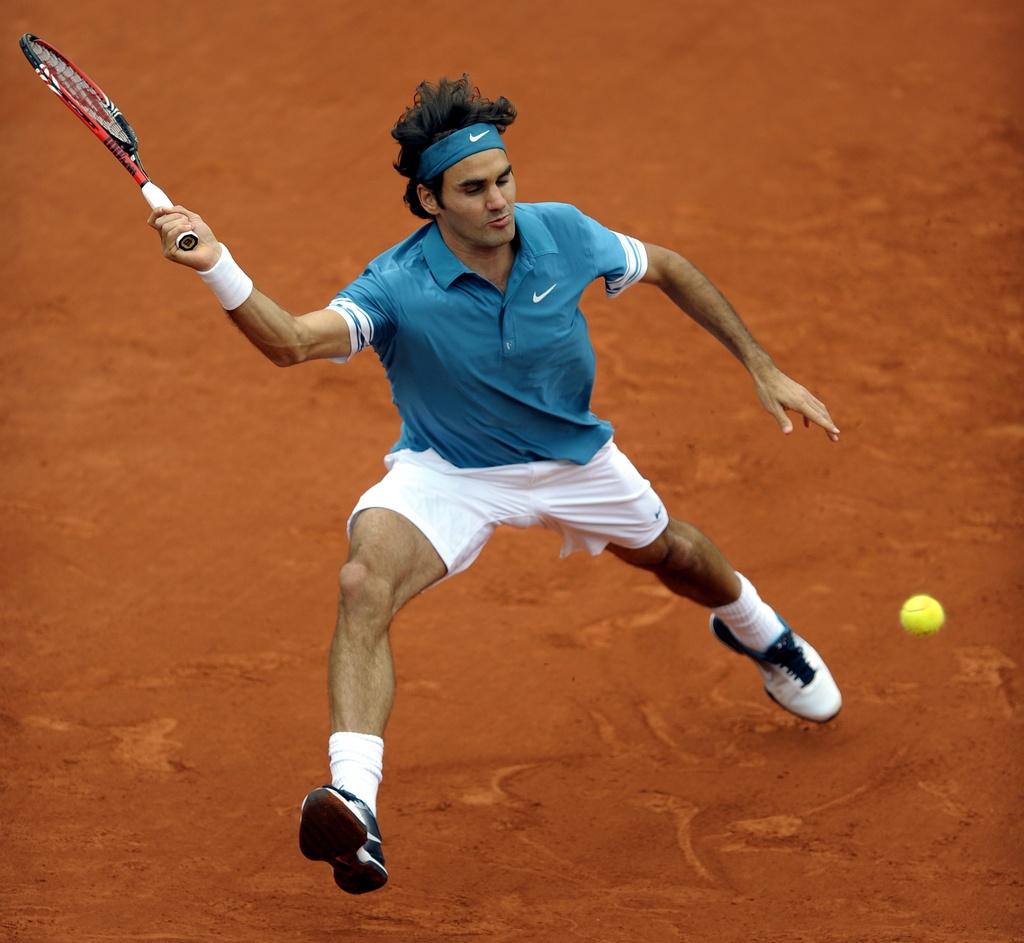Why age is no barrier for Roger Federer

Swiss tennis star Roger Federer, in a new role as underdog to both Rafael Nadal and Novak Djokovic, is looking to win the French Open for the second time after 2009.
On the eve of the Roland Garros tournament in Paris, Pierre Paganini, Federer’s physical trainer, tells swissinfo.ch that the holder of a record 16 grand slam titles is still at the peak of his form and reveals some of the reasons why he has succeeded for so long.
Paganini, 53, has toned the muscles and legs of 29-year-old Federer for more than ten years. He follows him for about 140 days a year and also works with Swiss number two Stanislas Wawrinka, seeded 14 in Paris.
Federer, seeded third, has a tough first match against Feliciano Lopez, ranked 41 in the world. Although the Spaniard has never won in eight encounters, their most recent match – in Madrid earlier this month – involved Federer having to save a match point before eventually winning 7-6, 6-7, 7-6.
swissinfo.ch: How is Federer’s physical form before Roland Garros?
Pierre Paganini: He is going from strength to strength. His game and legs are better than last year at the same time [12 months ago Federer lost in the quarterfinals to Robin Söderling, ending his six-year streak of consecutive grand slam semifinals].
After the Monte Carlo tournament, he trained intensively for two weeks. During the season, physical preparation can be divided into three periods. There’s one in December, one between February and April, and the third in summer. Sometimes there’s a fourth in the autumn. This helps Roger sharpen up constantly for key moments.
Each period lasts for a minimum two to three weeks. The emphasis is on the fundamentals at the physical and tennis levels. The different types of training are spread out appropriately so that he can deepen [his knowledge of tennis] and recuperate from this work, and especially put this into best practice on the tennis court. Between these periods, there are intensive weeks of maintaining physical condition and prevention of injuries.
swissinfo.ch: Is there any special training before Roland Garros?
P.P.: In order that he can adapt to different court surfaces, he has special training for muscles and the heart. On hard courts, the thigh muscles have to work more because of slips. On other surfaces, the muscles of the feet and calves are more important. But at the end of the day, it’s still tennis.
swissinfo.ch: Is a hard court more demanding physically?
P.P.: Some players say it’s harder, other say the opposite. There are fewer shocks on a hard court and it’s sometimes less harsh on your joints. On the other hand, the muscles, notably the thighs, are put to the test. Every player has his way of moving around in this situation. Roger has proven that he can play the game on any surface and knows how to use his legs.
swissinfo.ch: Do you work differently with someone who is 20 than with someone who is 30?
P.P.: Tennis is not a sport that makes you old at 30. On the contrary, it helps those who are more mature. At that age, details make the difference. Tennis demands intensive and differing efforts at the physical level, but pauses of 25 and 90 seconds and help partial recovery.
Let’s not forget that Roger already has 950 matches taking its toll on his legs and years of hard work behind him. As he hopes to play for several years to come, the proportion and distribution of training are extremely important. Every training session calls for a different approach: speed, nimbleness and endurance. As far as Roger is concerned, we do it so that he can benefit from slots of necessary recuperation in every type of training. We did it before, but it’s more important today.
swissinfo.ch: What do you think of the “theory of decline” which pops up regularly in the media?
P.P.: I do not understand how people can write such things. Let’s judge Roger’s performances seriously, but objectively. On the courts, he has come up against four generations of players. Seven years ago, he was already the world’s number one. In 2011 and approaching 30, he is ranked third in the world but he continues to play extraordinarily. It’s unprecedented.
Between 28 and 30, it’s impossible to progress at the same rhythm as when you were 22 or 25. Put simply, others are progressing too and that is the charm of this sport. I have enormous respect for Djokovic and Nadal but even more for Federer because his longevity is incredible. He is very near them and always has a chance to beat them.
swissinfo.ch: How does the continual travelling affect the players?
P.P.: There’s never much talk about this. The players have to put up with jet lag during the whole season. It’s essential to know your body to fight this as best you can. Roger manages to do this thanks to his exemplary lifestyle and his experience.
To give you an example, when he goes to the United States, his pulse rate goes up by ten beats a minute more during some efforts than in Switzerland. It’s vital to take note of these differences. Roger not only has an objective view of his body but also an uncanny feeling. It’s very useful for communication and planning.
swissinfo.ch: Federer has said he wants to regain the world number one spot. Is this realistic?
P.P.: That goes without saying, and it would be stupid not to believe it. That does not mean it’s going to be easy. If you look at the almost impossible things he has achieved in his career, you can only have confidence in him. It’s in the character of a champion to say what he will try to do. Roger is one of those rare people who will do their utmost to achieve their goal. That’s why he has every right to say things like that.
The French Open is the second grand slam event of the year and is held at the Stade Roland Garros in Paris.
It is taking place this year from May 17-June 5.
The 2011 French Open offered prize money of €17,520,000 (SFr21,900,000) up from €16,807,400 in 2010.
As in 2010 the event awarded equal prize money to men and women in all events. The male and female singles champions each receive €1,200,000, up from €1,120,000 last year.
The event began as a national tournament in 1891 as the Championnat de France International de Tennis.
(Adapted from French by Robert Brookes)

In compliance with the JTI standards
More: SWI swissinfo.ch certified by the Journalism Trust Initiative













You can find an overview of ongoing debates with our journalists here . Please join us!
If you want to start a conversation about a topic raised in this article or want to report factual errors, email us at english@swissinfo.ch.